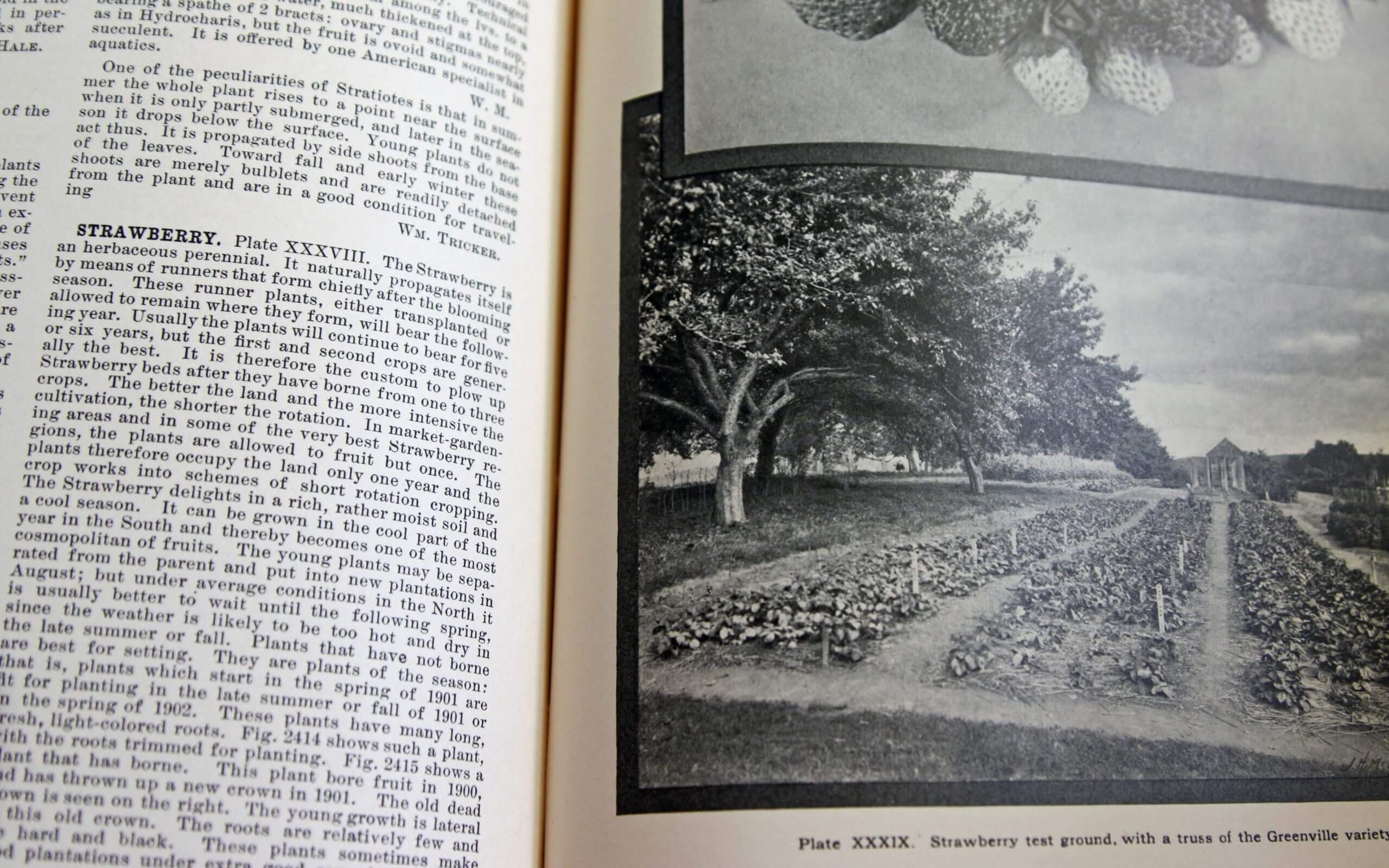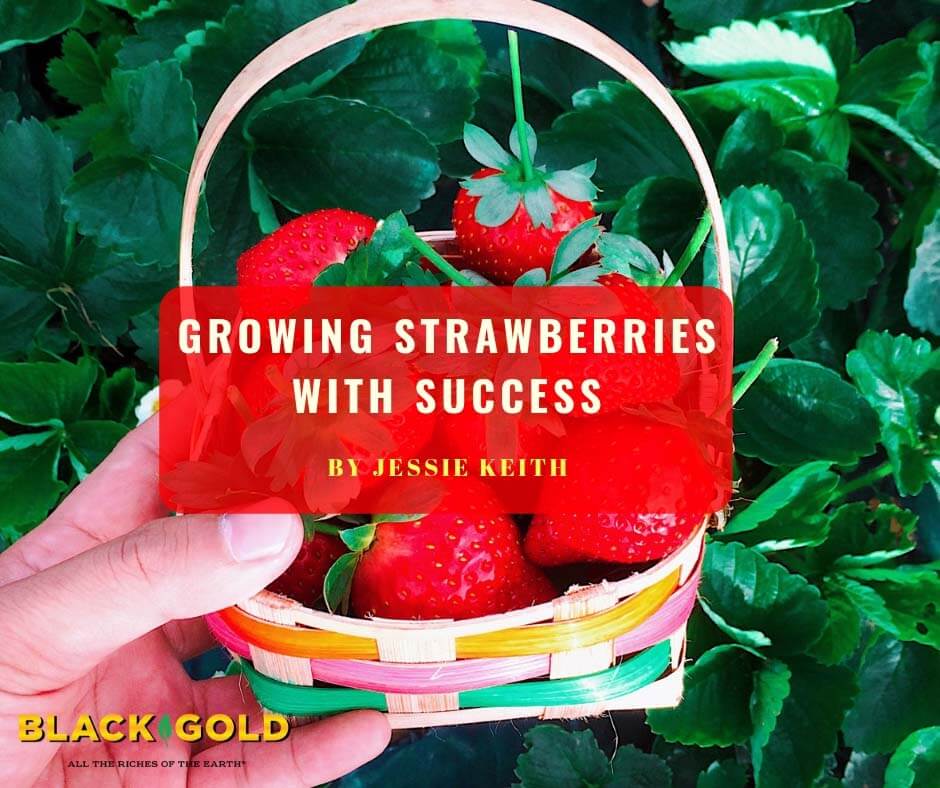
Sometimes old-time gardening advice is the best advice. When I searched for the most complete tips for growing the best strawberries (Fragaria x ananassa), I eventually turned to two classic gardening books, How to Grow Vegetables and Fruits by the Organic Method (J.I. Rodale, 1961) and the Cyclopedia of Horticulture (L.H. Bailey, 1902). Both offered a wealth of information on strawberry growing. In fact, my new strawberry patch is already producing good fruit!
Preparing Strawberry Beds
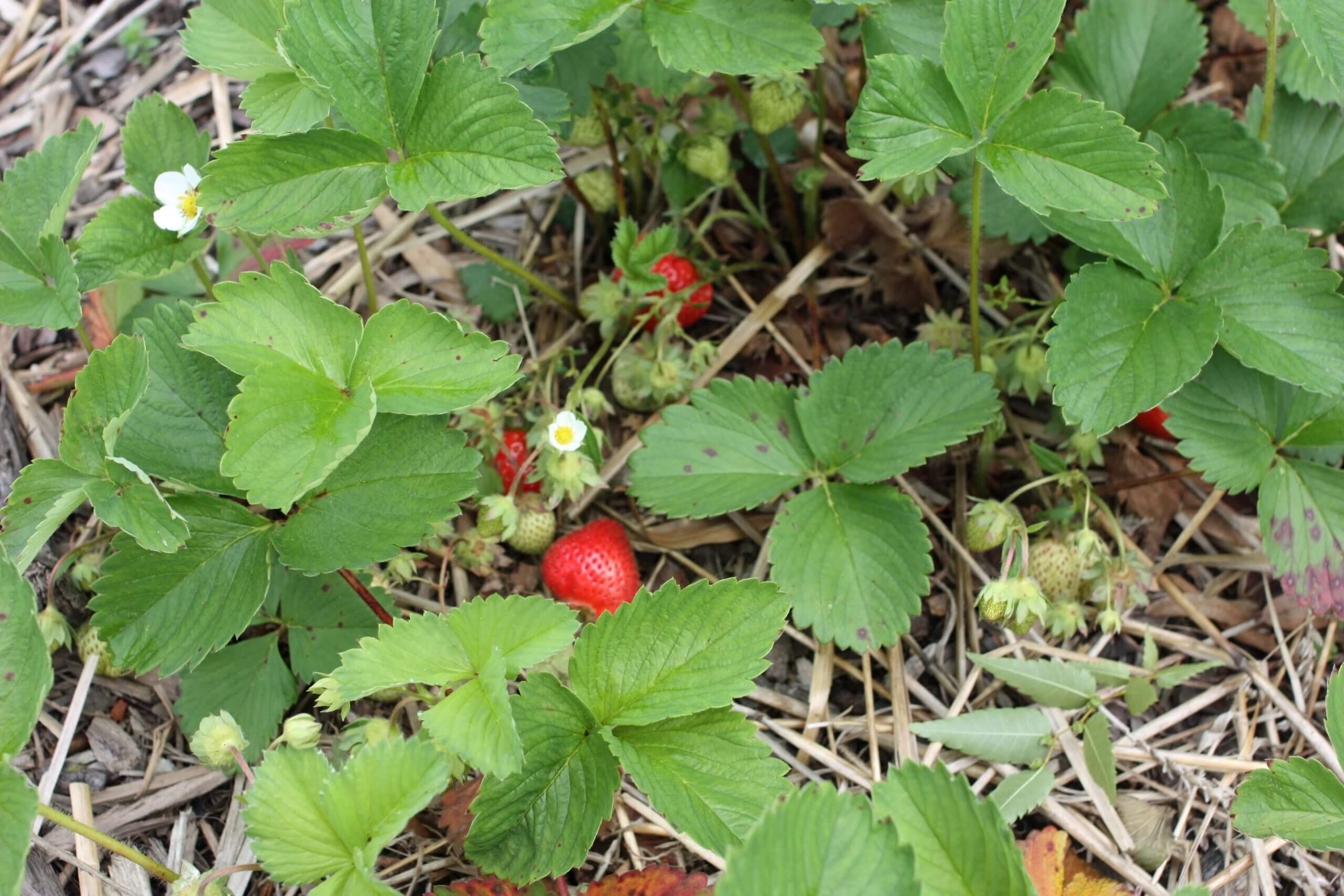
When preparing my beds for my strawberries, I took Rodale and Bailey’s advice and chose a large space, which I amended and mounded so the ground would be rich and light while offering superb drainage. According to Rodale, “Strawberries need rich, moisture-retentive but light soil in a warm position.” He suggested planting them on a South-facing slope, so I provided the next best thing by creating a mounded bed in full sun. This year I amended with Black Gold Garden Soil, which feeds plants for up to 6 months, and topped the beds off with a layer of Black Gold Garden Compost Blend. In the fall I will add a little fertilizer formulated for fruit and berries.
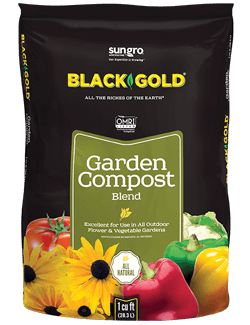 My mounded strawberry beds were raised to a height of 6 inches to ensure excellent drainage. Then I top dressed with a little seed-free hay to make sure any developing strawberries would not rot on the moist ground. I plan to add some hay or light mulch once again in the fall to keep plants protected through winter and in spring. Strawberry plants can be hit by spring frosts, so it pays to protect them for the season.
My mounded strawberry beds were raised to a height of 6 inches to ensure excellent drainage. Then I top dressed with a little seed-free hay to make sure any developing strawberries would not rot on the moist ground. I plan to add some hay or light mulch once again in the fall to keep plants protected through winter and in spring. Strawberry plants can be hit by spring frosts, so it pays to protect them for the season.
Spacing Strawberries
Spacing strawberries properly is important because better spacing will ensure larger berries. As L.H. Bailey put it, ” For the very finest berries, each plant is allowed a space or hill by itself.” Truly, cramming strawberry plants together will yield smaller berries, so for each of my plants I allotted an 18″ x 18″ space around each. This has proven to be ideal. My plants are already sending out new shoots and producing sizable berries.
Irrigating Strawberries
Keeping berries well irrigated is also essential for good crops. I make sure the soil is slightly moist to a thumb’s depth before watering again. Too much water can encourage root and fruit rot while too little can cause developing fruits to be aborted, so maintaining a good moisture balance is essential.
Choosing and Harvesting Strawberries
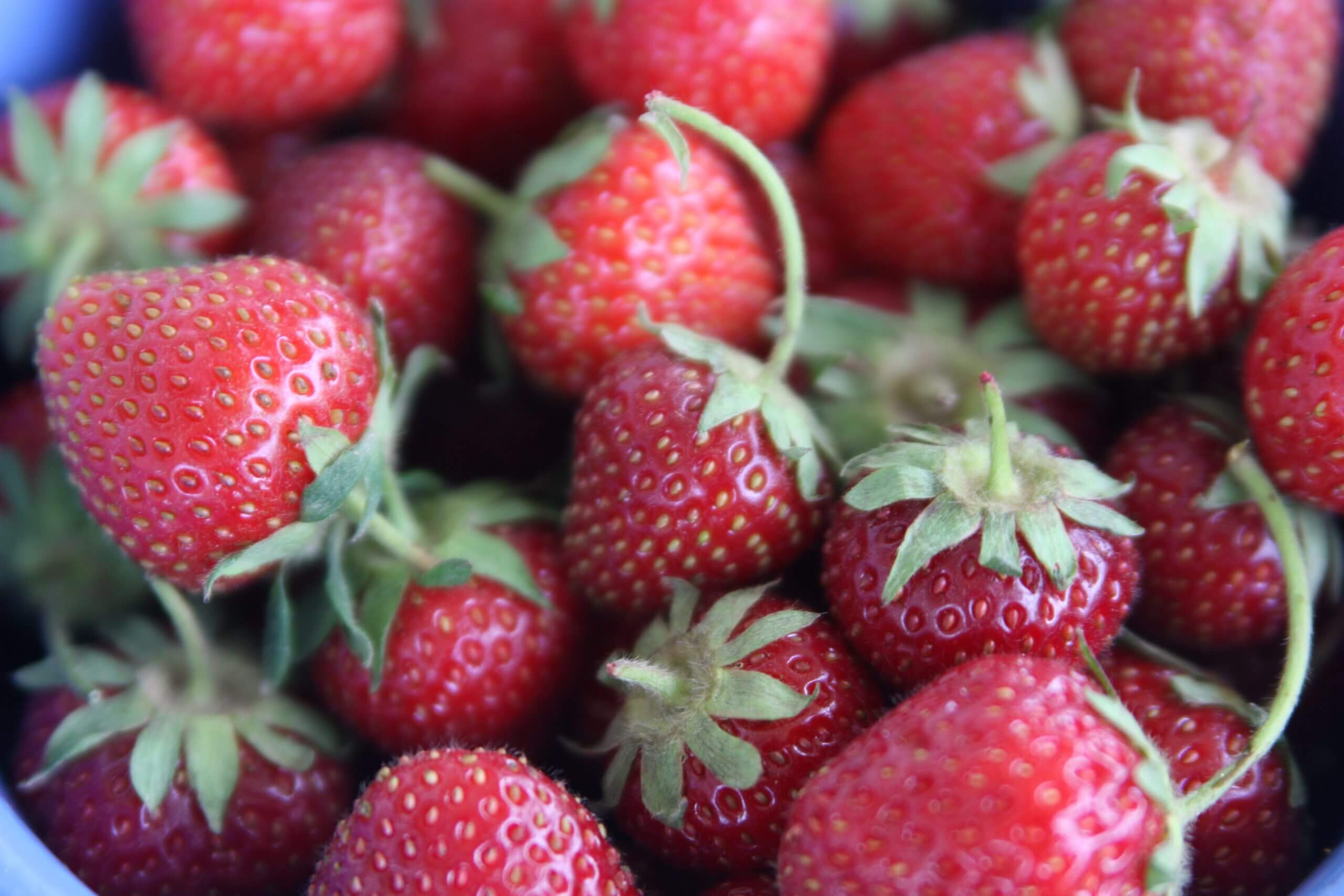
Strawberries harvested at the right time should be sweet and red through and though Successfully growing strawberries starts with choosing a great variety. Some strawberries are June bearing (single season)–meaning they produce just one large crop early in the season–while others are everbearing (day neutral)–meaning they produce one large spring crop and then continue producing intermittently through summer and especially in fall. Additionally, varieties may be early-, midseason-, mid-late season-, or late-bearing. I turned to my favorite source for superb berries, Nourse Farms, based in Whately, MA. Their stock is reasonable, always healthy, and they have a great selection. This year I chose the flavorful, everbearing ‘Albion‘.
Replanting Strawberry Runners
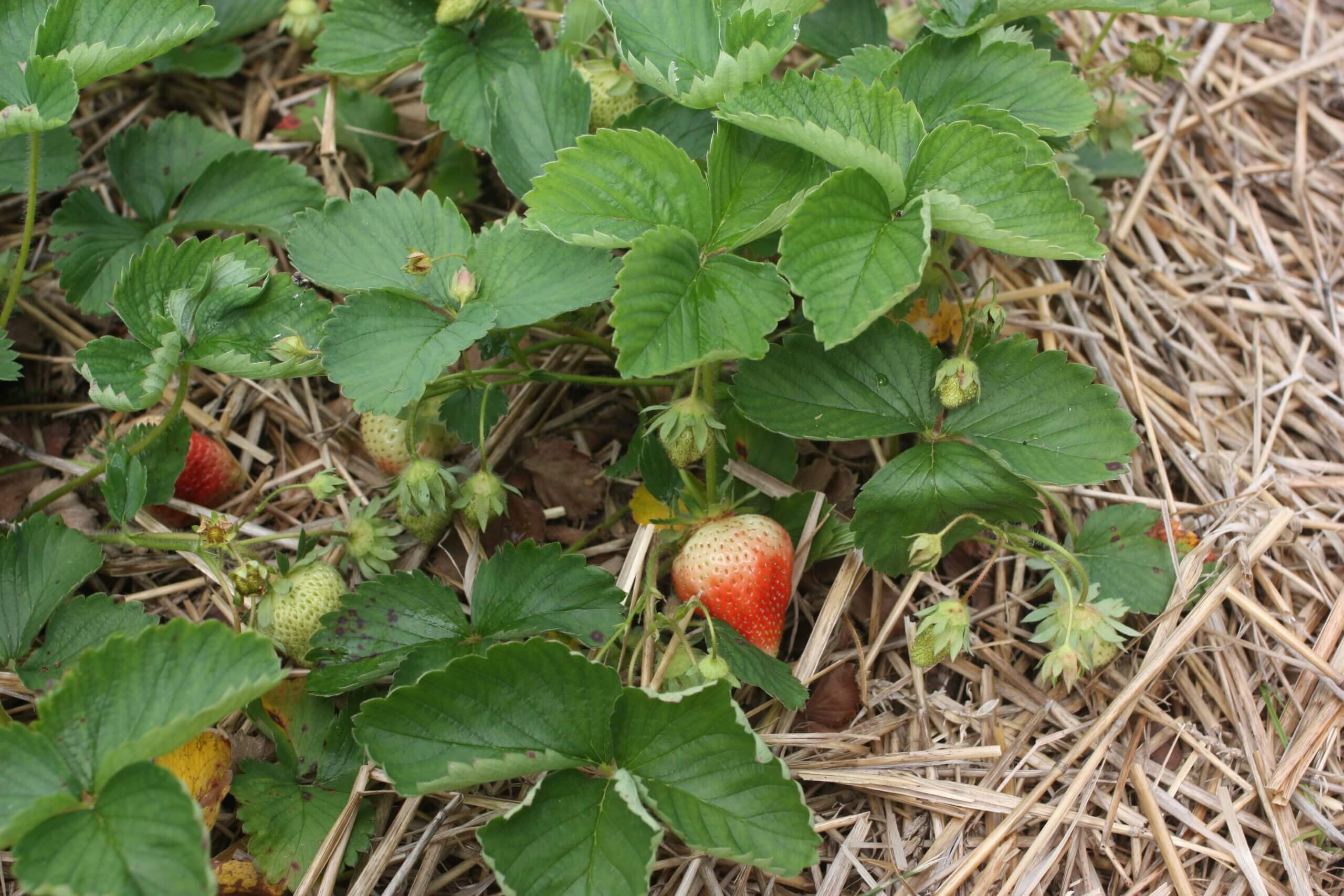
The last important piece to understand about strawberries is how to maintain their runners and when to replant. Strawberry parent plants need to be replaced around every three years. Strawberries send out runners, each runner terminating in a new plant. The runners need to be managed to keep plants from becoming overcrowded (once again try to maintain reasonable space between plants to encourage larger berries), but the new plantlets produced by runners can eventually be nurtured to used to replace tired parent plants. Unwanted runners can simply be snipped away or moved to create an even larger berry patch.
A perfectly formed and ripened strawberry is a wonderful thing. Berries with fully developed sugars should be red through and through and have a balanced tart and sweet flavor. When strawberry season is on, I always take the time to make strawberry rhubarb crumble (recipe below). It’s my family’s favorite way to enjoy garden-grown strawberries, aside from eating them fresh with cream. There’s nothing like picking our own for whatever strawberry delight we might create during strawberry season. Thanks Rodale and Bailey!
Strawberry Rhubarb Crumble
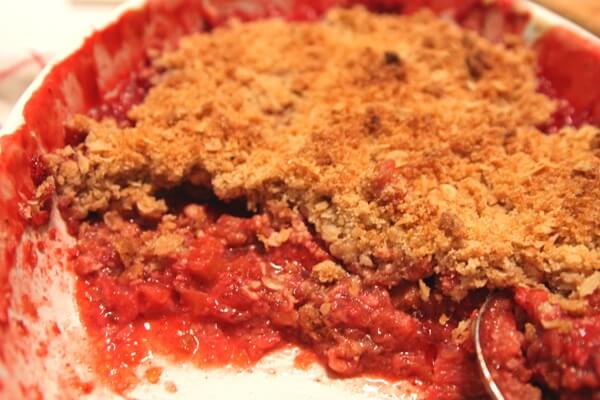
Ingredients:
5 cups quartered fresh strawberries
3 cups thinly sliced fresh rhubarb
2/3 cup sugar
1/4 cup tapioca
1 teaspoon fresh lemon juice and a tsp of finely grated zest
3/4 cup white whole wheat flour
3/4 cup old-fashioned oats
2/3 cup packed light brown sugar
Pinch salt
6 tablespoons cold unsalted butter, sliced into thin pats
Directions:
Preheat oven to 375 degrees Fahrenheit. Lightly grease a 7-by-11-inch baking dish.
Mix the strawberries, rhubarb, sugar, tapioca, lemon juice and zest together in a large bowl, and pour the mixture into the greased baking dish.
Add the flour, oats, light brown sugar, and salt in a medium-sized bowl and whisk together. Place the diced butter to the mixture, and work it together with your fingers until it’s crumbly. Evenly distribute the crumb mixture on top of the fruit.
Bake the crisp in the oven for 40 minutes. The fruit filling should bubble along the sides and the top should be golden brown.
Serve it with ice cream if warm or whipped cream if cold.
* The same filling can be placed in a double pie crust and baked for the same period of time, if you’d prefer pie.
